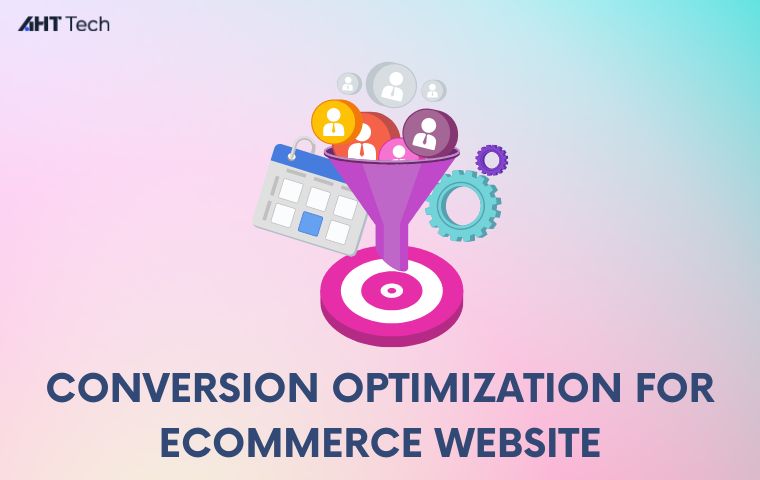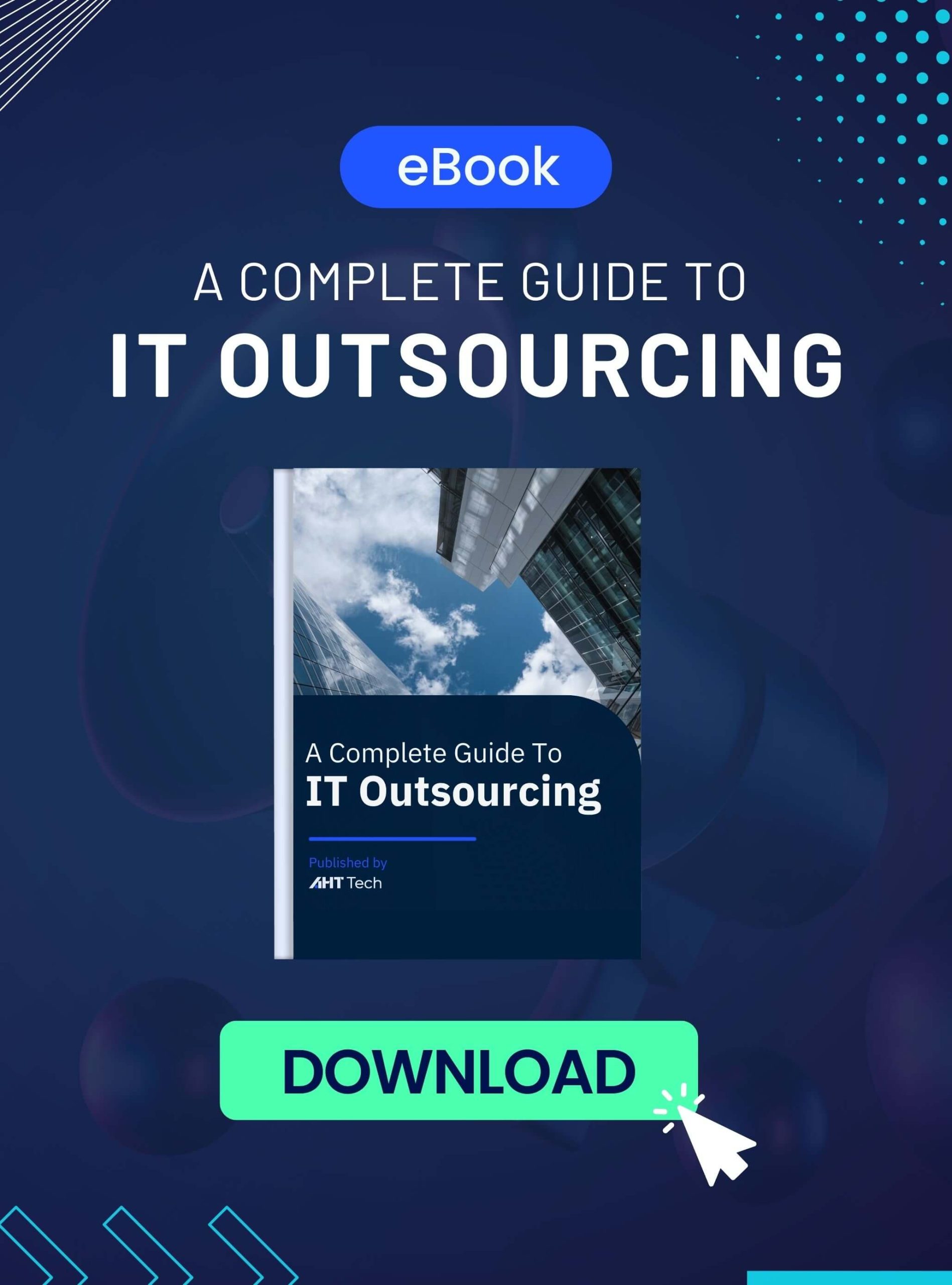TABLE OF CONTENT
Understanding Conversion Optimization for Ecommerce Website
What are Metrics to Help Measure Ecommerce Conversions?
Explore 10 Advanced Tips to boost Conversion Optimization For Ecommerce Website
Conclusion
Understanding Conversion Optimization for Ecommerce Website
Basically, conversion is the desired outcome of a marketing effort, website, or business strategy. It’s an action that moves a user closer to your ultimate goal. It could be making a purchase, signing up for a newsletter, or simply clicking on a link.
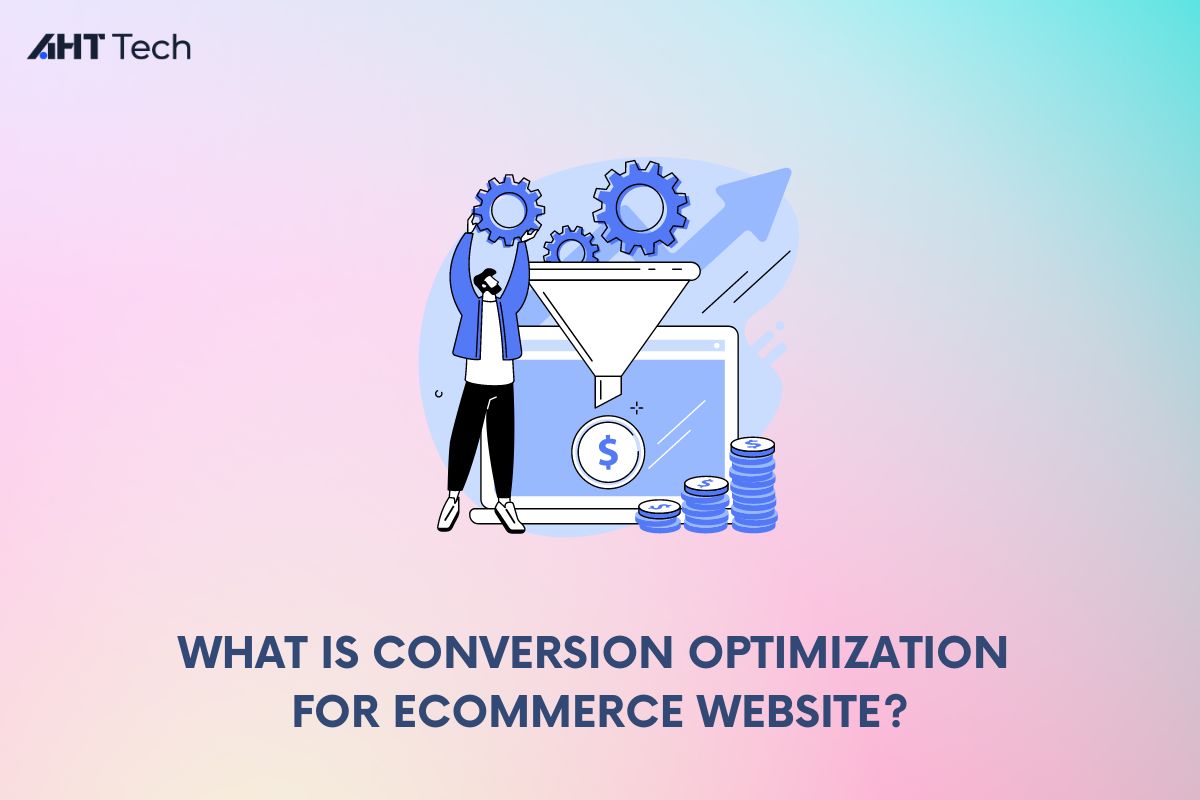
However, conversions can be defined differently depending on distinct stages of a customer’s journey. For instance, for social media, an ad click can show a sign of conversion while adding a product to the cart indicates a stronger conversion for a product page. To help you understand clearly, here is the detailed explanation.
At the first stage of the customer journey – the awareness stage, your customers don’t know much about your brand or how you can help them. Therefore, a conversion is not a sale, it is rather a repeat visit or an email subscription.
Moving to the next stage which is a consideration phrase, perhaps you have customer email addresses from the previous stage. However, your subscribers are still not eager to make purchases yet, they need more information to make their decisions. At this stage, you had better offer them more content that delves deeper into the problems they are facing. The sign of conversion can be regarded as clicking through your blog post or downloading documents you provide customers.
Stop by at the final stage – decision, and conversion is, of course, driving sales. It is now the time to optimize your sales by encouraging consumers to complete the buying process. To do this, you should proactively reach out to your customers and minimize the friction or any obstacles that deter them from finalizing their purchase. For instance, you can implement advanced features for the check-out process, delivering a smooth experience, thereby improving conversion rates.
That said, conversion optimization for ecommerce website involves using strategic techniques to get more of your website visitors to take a desired action.
What are Metrics to Help Measure Ecommerce Conversions?
To find the way to implement conversion optimization for ecommerce website tactics, it is essential to get deep insights of which metrics can affect conversion rate of a website. Moving these metrics in the right direction will generally contribute to an enhancement in your overall store conversion rate. Below are 5 key metrics that you should pay attention to monitor properly.
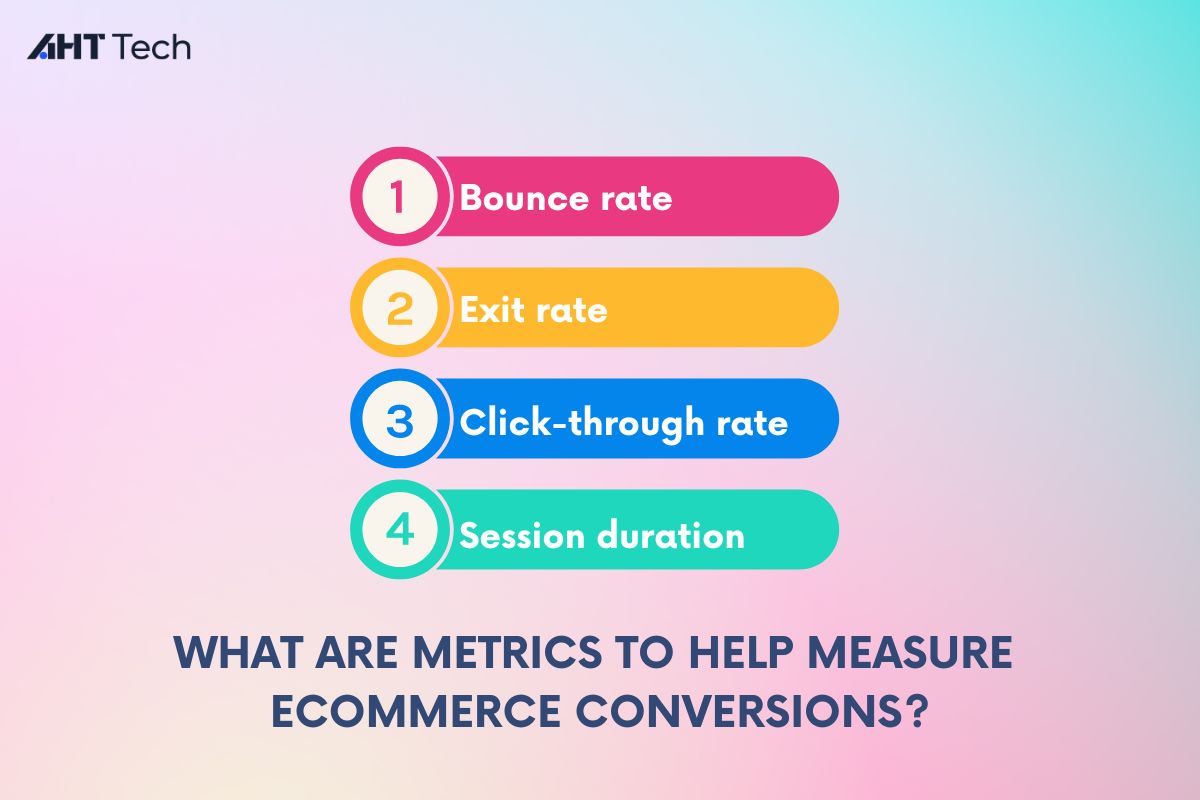
Bounce rate
The bounce rate refers to the percentage of individuals who exit the website after viewing only a single page. A high bounce rate is undesirable because it suggests that visitors are not finding what they are seeking in your store, leading them to leave immediately after arriving on the site.
Exit rate
Exit rate, often mistaken for bounce rate, represents the percentage of individuals who depart from their website after viewing a particular page. This rate informs you about the last page that users access before moving on.
A notably high acid rate on a specific page can serve as a warning sign. This metric is one you can focus on reducing through landing page optimization effort.
Click-through rate (CTR)
The click through rate represents the number of individuals who click on a link to your websites from an advertisement or e-mail. To increase this metric, you can optimize AdWords or e-mail marketing campaigns frequently and focus on increasing user click through rates to your website, encouraging them to take action or even engage on social media platforms.
Average Session Duration
The average section duration is an engagement metric that provides a broad idea of how long visitors spend on your sites during a single session. A high bounce rate typically corresponds to allow overage time on side, indicating that visitors are not staying on your side long enough to convert. Hence, improving this metric is an effective way of conversion optimization for ecommerce website.
Explore 10 Advanced Tips to boost Conversion Optimization For Ecommerce Website
For your ecommerce product page to perform well and attract a significant number of leads and sales, it’s crucial that your visitor have a positive user experience on your site.
At this point, the process of ecommerce conversion optimization for ecommerce website can create positive experiences for visitors. Here are some ways to enhance your conversion rate and deliver great experiences to satisfy customers.
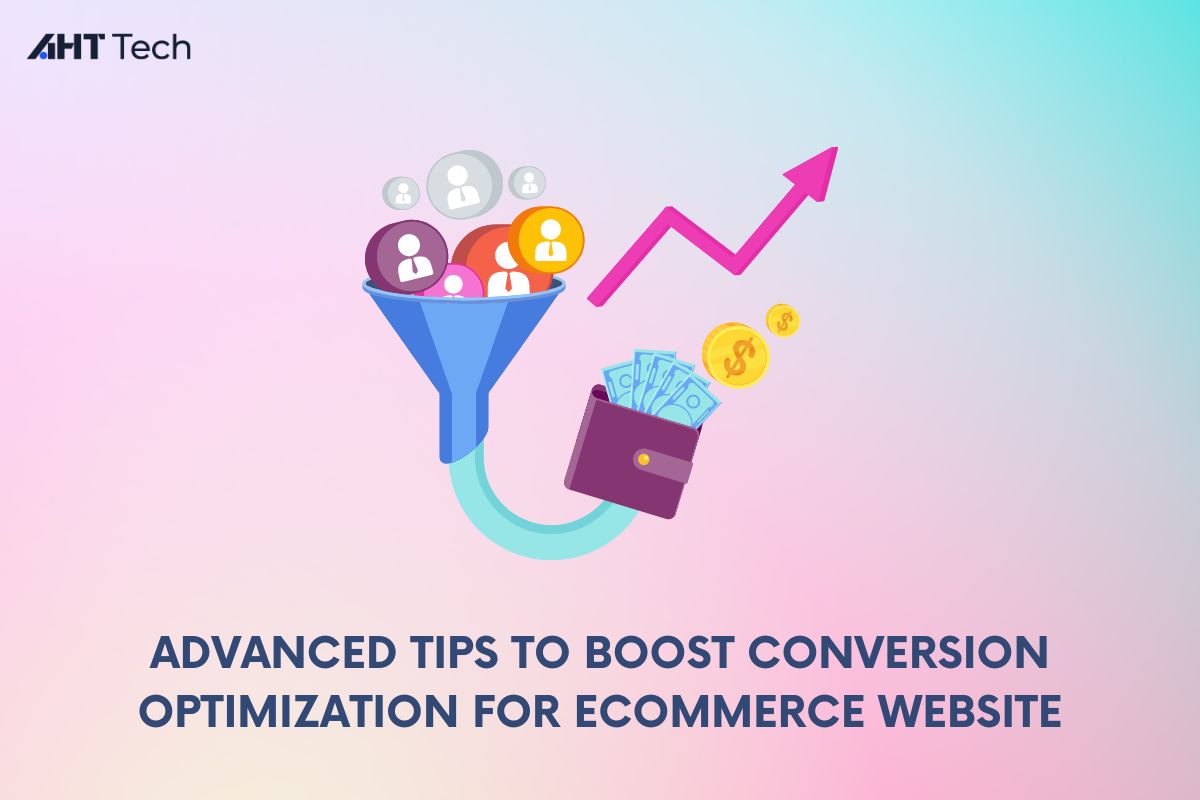
Optimize Ecommerce Checkout Process
An easy and straightforward check out process is crucial to prevent any obstacles for customers when making a purchase. This is a key factor in boosting conversions especially for visitors who are ready to buy.
To enhance this process, it is just as simple as offering multiple payment options, displaying a progress indicator or simplifying discount applications.
Add Trust Signals
Trust signals such as certificates and site seals play a vital role in boosting a customer regarding their decision to purchase from an ecommerce website. Here are several ways you can leverage to generate trust signals as a way of conversion optimization for ecommerce website.
- Case studies
- Testimonials
- Social proof statistics
- Client/customer logos
- Number of five-star ratings from industry review site
- Partnership and co-branded logos
Clearly Display Product Reviews
According to a report, consumers who approach reviews before buying are 115% more likely to convert. The truth is that when a potential customer sees that other people have had great experiences with your product or service, it builds trust in your brand and makes them more confident to take the plunge and make a purchase.
On the other hand, reaching out to product reviews can also bring you deep insights of what people feel about what you offer. Leveraging this advantage, you can identify areas for improvement and innovate your service to meet customer needs to promote them to complete your desirable conversion. Therefore, it can be said that the more positive reviews you have, the higher your conversion rates.
Optimize Websites for Mobile Users
According to a report, in the USA, 76% of consumers shop using mobile devices. Knowing this, optimizing mobile experience is crucial for all ecommerce websites.
Given the widespread use of smartphones for accessing websites, prioritizing mobile user experience is absolutely crucial. For mobile devices optimization, there are 2 best tactics which are optimizing loading speed and implementing responsive design.
- First tip: To make your website have a fast loading speed, using tools like Google PageSpeed Insights can help you evaluate the loading speed on mobile devices and identify areas for improvement.
- Second tip: Crucial for conversion optimization for ecommerce website, is implementing a responsive design. This ensures that your website is good-looking on any device, whether it’s a phone, tablet, or computer. To do this, you can utilize Bootstrap, which utilizes CSS to make a layout work and adjust to various device screens.
Simple Site Navigation
Users expect logically website navigation that enables them to find what they need with minimal clicking around the site. For instance, ensuring you include an explicit “View All” option that enables users to see all available items on the site within a limited scope.
Moreover, ensuring that product categories are displayed in the top level of main navigation, eliminating the need for users to hover on desktop. Similarly, you should make sure they are immediately visual after opening the main navigation on mobile devices.
Use Live Chat Software and Chatbots
Live chat support clearly is not a new way to boost conversion optimization for ecommerce website. Using live track support software and chatbot to engage with customers can help the process of addressing their inquiries faster without the need for a long time waiting over the phone.
The two are often viewed as alternative options to each other, with chatbots often replacing the human element of live chats. However, companies that can leverage the usage of both — with chatbots interacting with customers in off-hours — will likely find the greatest success.
Give Detailed Product Descriptions
Keep in mind that customers cannot physically touch the product nor ask questions and as they would a physical store. Therefore, it is paramount to make sure that the product descriptions that you provide to customers are in great detail. By this way, they can understand exactly what they are getting, increasing the opportunities for conversion optimization for ecommerce website.
Besides using images in conventional ways, adding a product video demonstration can also serve as an excellent supplement to product description, providing customers with a visual understanding of the product’s features and benefits from various angles.
Add Filters to Your Category Pages
Filters play a crucial role in helping customers navigate to the right products. Implementing filters to deliver the best outcomes requires you to conduct research to identify the various questions that customers commonly have about products. After that, you can incorporate filters on your category page to address the queries.
For instance, you can address customer concerns about pricing by adding a price filter on the category page. This feature helps customers to find products within their budget, effectively eliminating objections regarding price and enhancing their shopping experience.
Make “Add to Cart” and “Checkout” buttons prevalent
When a user is tending to make a purchase, they can be encouraged further by a clear actionable button that informs exactly what to do, standing out from the surrounding text and images.
For example, big ecommerce companies now provide a customizable “Buy” button that they can effortlessly integrate into “trust” signs to enhance conversion. This is an actionable way to promote conversion optimization for ecommerce website.
Use High-quality Images and Video
When shopping online, customers can’t physically interact with a product as doing in brick-and-mortar ones. Consequently, detailed images and videos become vital to help visualize what the products exactly look like.
They can assist bridge the gap between the online store and the real-world experience. By showcasing products with high-quality visuals, conversion optimization for ecommerce website starts to come into play as you can provide crucial information that fosters customer purchases and increases conversions for websites.
Conclusion
Optimizing ecommerce conversions is essential for driving business growth. Above are several strategies to improve conversion optimization for ecommerce website. By leveraging these insights, online businesses can refine their strategies, fulfilling the customer satisfaction and foster growth in the competitive e-commerce landscape.
However, applying those tactics in real-world situations can be a little different as mentioned in theory? You may wonder whether they are successful or not. Fear not, set your worries aside because AHT TECH is here to help you . As a leading company in ecommerce development, AHT is proud to be a trusted partner of more than 25 ecommerce global platforms such as Shopify, Magento, BigCommerce, etc. We are willing to lend you a hand in the race of boosting conversion optimization for ecommerce website.
Contact us right now for advanced advice to maximize your ecommerce website conversion. You can also watch more about our ecommerce development service in this video below:


